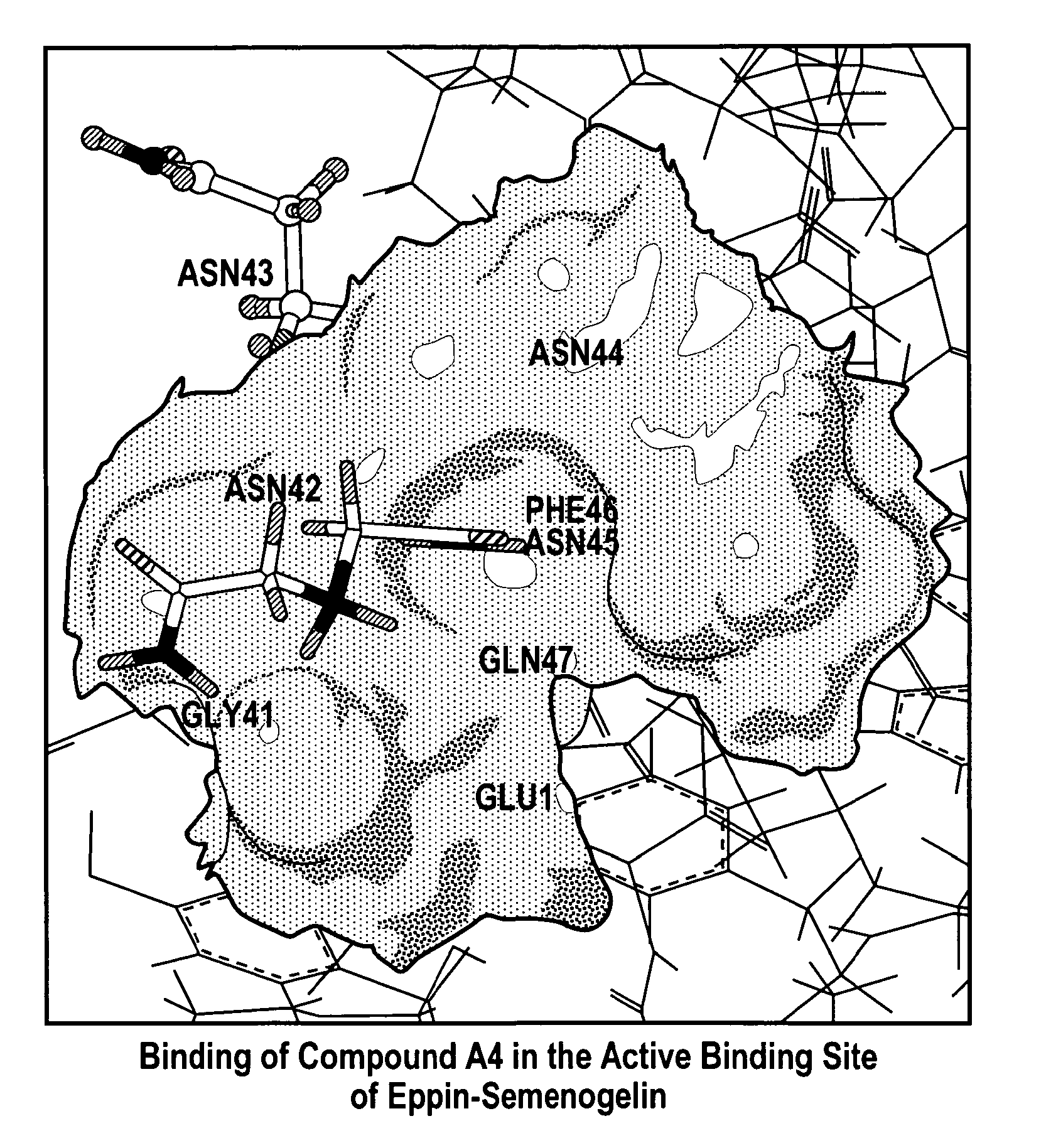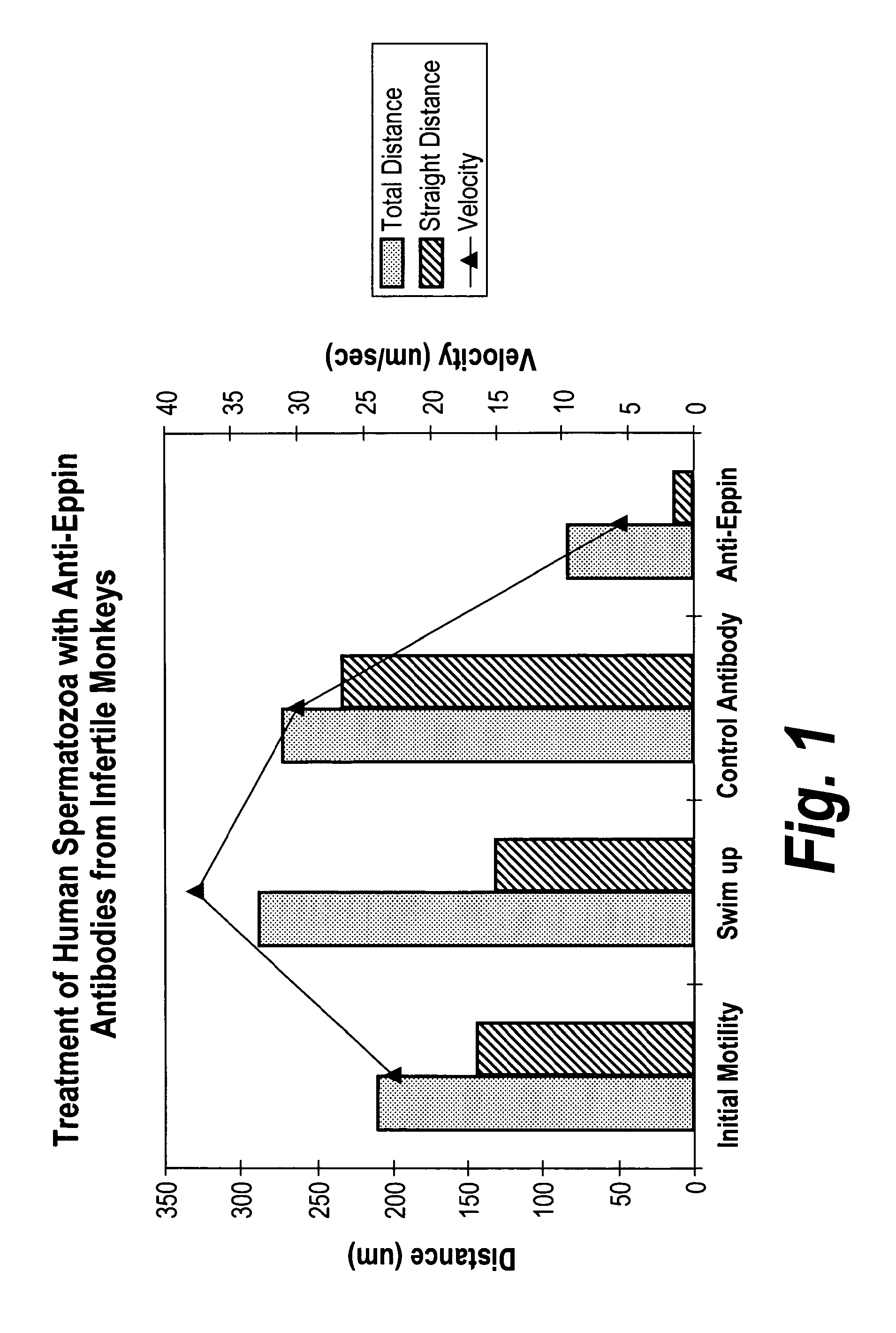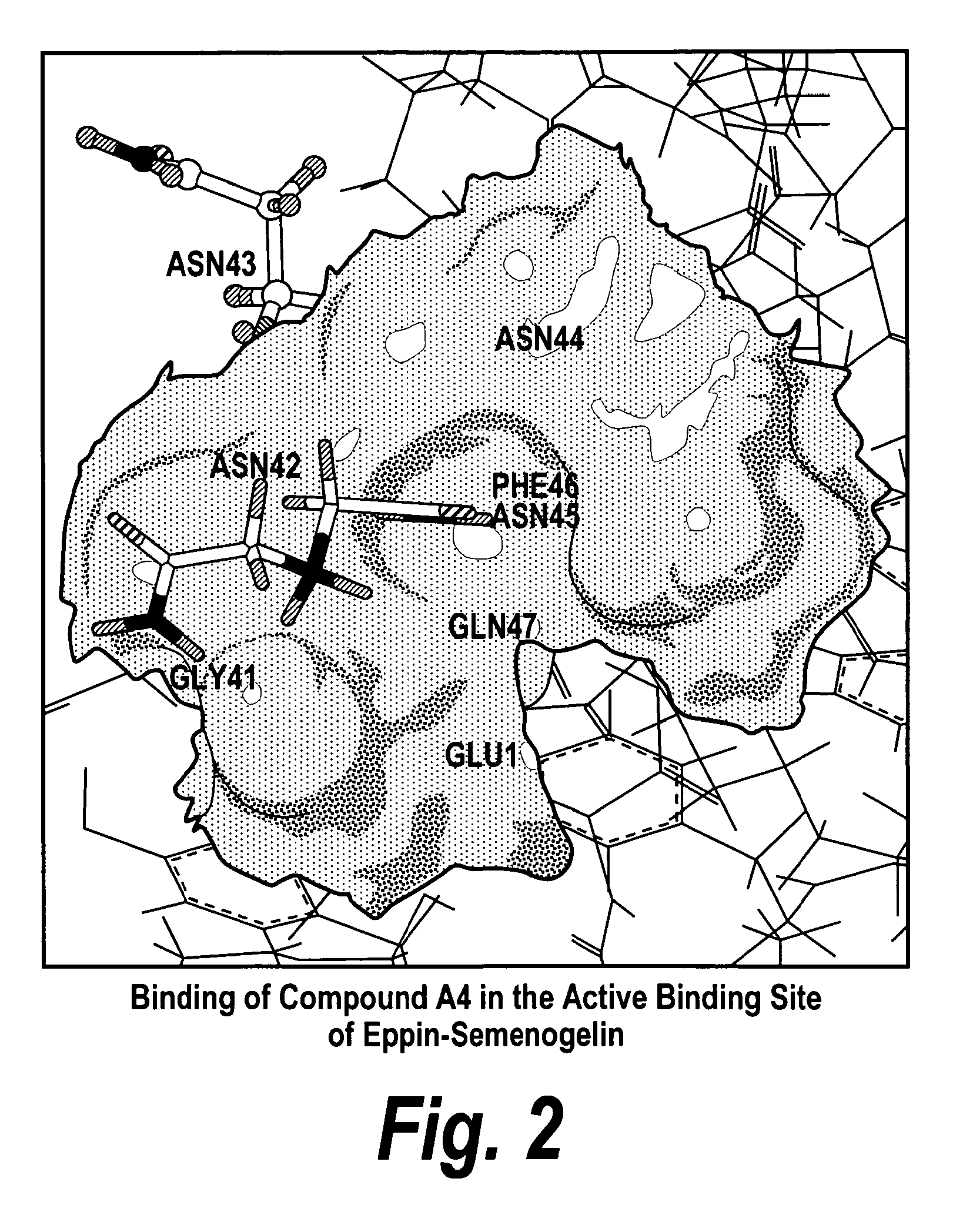Inhibitors of eppin/semenogelin binding as male contraceptives
- Summary
- Abstract
- Description
- Claims
- Application Information
AI Technical Summary
Benefits of technology
Problems solved by technology
Method used
Image
Examples
example 1
In Silico Assay to Identify Compounds which Inhibit Eppin-Semenogelin Binding
[0159]An in silico assay was developed based on the putative binding site of Eppin and semenogelin. This site is at the C-terminal end of Eppin, namely amino acids 75-133. This amino acid sequence was incorporated into a model using the Sybyl modeling program, which enables one to view the three dimensional structure of the binding site and screen in silico libraries of compounds for their ability to bind the putative binding site. Hits identified using this in silico assay can then be tested in an in vitro assay, such as the ones in Examples 2 and 3 that follow.
[0160]When a library of small molecules was evaluated for their ability to bind to Eppin and block its binding to Sg, seven small molecules were identified and modeled for their docking in the pocket. A representative docking of a small molecule in the binding pocket in Eppin is shown in FIG. 2.
[0161]FIG. 2 is a molecular model of the C-terminal of ...
example 2
High Throughput Assay to Identify Compounds which Inhibit Eppin-Semenogelin Binding
[0163]The compounds identified in Example 1 were tested in an in vitro assay for their ability to inhibit the binding of Eppin and semenogelin. The assay used is shown schematically in FIG. 3.
[0164]Background
[0165]The goal of this assay was to evaluate whether compounds would bind to Eppin, and inhibit the binding of Eppin to semenogelin. In an alternative embodiment, the Eppin could be bound to semenogelin, and the ability of the compounds to dislodge semenogelin can be measured.
[0166]The former assay is perhaps more useful in identifying compounds for administration to a patient interested in temporary and reversible infertility, because the compound would be administered, cross the epididymis, come in contact with Eppin, and thus bind Eppin. The thus-bound Eppin would not come into contact with semenogelin until ejaculation, and since it would be bound to the administered compound, it would not bin...
example 3
Assay for Eppin-Sg Binding in a High Throughput Screen (HTS)
[0176]In another embodiment of a high-throughput screen to identify compounds effective at inhibiting the binding of Eppin to semenogelin, putative compounds can be screened using a variation on the AlphaScreen™ assay from Packard BioScience for HTS.
[0177]The AlphaScreen™ (AS) is amplified luminescent proximity homogeneous assay in which two small beads (200 nm) are employed to hold donor and acceptor protein molecules. The donor and acceptor molecules can be Eppin and semenogelin, and when these proteins bind, singlet state oxygen molecules diffuse from the donor bead to the acceptor bead (˜4 μsec) and fluorophores subsequently emit light at 520-620 nm.
[0178]This technology has been designed for high throughput screening, and can be adapted for Eppin-semenogelin binding and used in 384 well plates to screen compound databases.
[0179]Strongly positive hits can be retested in a dilution series, and those compounds which still...
PUM
| Property | Measurement | Unit |
|---|---|---|
| Solubility (mass) | aaaaa | aaaaa |
Abstract
Description
Claims
Application Information
 Login to View More
Login to View More - R&D
- Intellectual Property
- Life Sciences
- Materials
- Tech Scout
- Unparalleled Data Quality
- Higher Quality Content
- 60% Fewer Hallucinations
Browse by: Latest US Patents, China's latest patents, Technical Efficacy Thesaurus, Application Domain, Technology Topic, Popular Technical Reports.
© 2025 PatSnap. All rights reserved.Legal|Privacy policy|Modern Slavery Act Transparency Statement|Sitemap|About US| Contact US: help@patsnap.com



